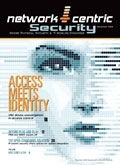
Beyond Plug And Play
- By Steven Titch
- Nov 25, 2008
 With IP poised to drive video security market growth over the next five years, camera manufacturers have begun to get serious about developing a standard interface for cameras and video management systems.
With IP poised to drive video security market growth over the next five years, camera manufacturers have begun to get serious about developing a standard interface for cameras and video management systems.
But the effort may not be easy. A battle over the specification has erupted between the three leading camera manufacturers, which favor one approach, and a wider swath of the industry, which supports another.
A standard would eliminate the time camera vendors must spend developing programming interfaces for individual applications so their cameras can seamlessly connect and share information with VMS software from other manufacturers. The overall industry, however, is aiming for a standard of wider scope: a specification that could be used to tightly integrate video surveillance, access control, sensors and alarms.
The dueling industry groups formed earlier this year. The Physical Security Interface Alliance, backed by Cisco Systems, DVTel, General Electric, Honeywell, IQinVision, Panasonic, Pelco and Verint, launched in February. In May, the three IP camera vendors with the largest market shares, Axis Communications, Bosch and Sony, formed the Open Network Video Interface Forum. Both groups seek to build on the process started by the Security Industry Association, and their work, parties representing both sides say, was an outgrowth of the frustration of SIA’s slow pace.
Although analog CCTV cameras still outnumber their digital IP counterparts in terms of installed base, IP cameras make up the lion’s share of new purchases. Despite the general economic uncertainty, the industry consensus is that IP camera sales are poised for explosive growth, particularly as prices fall and other standards, such as H.264, become more commonplace.
The U.S. market for IP cameras today stands at $700 million and is expected to generate total sales of $20 billion to $40 billion over the next 10 years, said John Honovich, an industry analyst and publisher of IPVideoMarket.info. Worldwide, IP convergence is expected to drive the video surveillance systems market to $46 billion in 2013 from just $13.5 billion in 2006, according to ABI Research, New York.
Why A Standard?
After hearing for several years about the “plug-and-play” utility of IP, discussion of a need for a standard interface to integrate IP video gear may strike some as discordant.
But while IP sets a standard way of transmitting data, equipment designed for specific applications needs a way to exchange additional information if they are to work in synchronicity.
Anyone who has connected a computer, printer and router recently recalls working with drivers. Today, most preloaded PC operating systems come with a library of drivers for various peripherals. When a new device is attached, the OS automatically retrieves and loads the appropriate driver. But up to a few years ago, printers and modems came with their own software drivers that users had to install themselves. In more cumbersome cases, they had to search a vendor Web site for the appropriate driver.
Likewise, even though there is a wide range of IP video management systems available, cameras from individual vendors must come with drivers or, to be more accurate, APIs to integrate with them. PSIA and ONVIF represent efforts to arrive at a common format that all cameras can use to integrate with any VMS.
“Just because a printer supports an Ethernet connection doesn’t mean it can talk to another computer,” said Jeremy Wilson, director of product marketing at Honeywell Systems Group, Louisville, Ky. Digital video, he said, lacks a common specification on how to send, receive, and compress and decompress an image.
“MPEG-4 doesn’t say how to get from point-to-point to handshake,” Wilson said. “Everyone’s implementation is a bit different.”
For camera, NVR and VMS manufacturers, dealing with these differences leads to greater engineering cost. “Standards make life easier for VMS companies to regulate input from the cameras, without having to spend half the engineering on interoperability,” said Fredrik Nilsson, general manager at Axis Communications AB’s U.S. headquarters in Chelmsford, Mass.
A common interface also would be a major step toward achieving touted plug-and- play abilities.
“People have an expectation of basic interoperability,” said David Bunzel, managing director of Santa Clara Consulting Group and executive director of PSIA.
“We want to be able to plug a camera into a VMS system and have the VMS know what camera it is and how to set it up.”
Strength vs. Strength
The standards battle pits strength in numbers against strength in market clout.
“PSIA is a lot further along and has broader support,” Honovich said, but if the ONVIF spec picked up steam, “it would muddy the water.” Generally,VMS vendors such as Milestone Systems and Genetec are neutral -- they just would like a single standard.
If more vendors shift toward ONVIF, though, they would have to take the specification seriously, Honovich said.
Of the two specifications, PSIA has made the most progress. As this article goes to press, a draft specification is being circulated for comment, and version 1.0 of the standard, according to Bunzel and other PSIA members, is scheduled for release this month.
ONVIF efforts, on the other hand, were largely dormant until PSIA became the buzz at the ASIS International conference in September. It was not until the following month, at the Security Essen tradeshow in Germany, that ONVIF released an outline of the specification and formally opened the group for wider membership.
ONVIF’s charter members -- Axis, Bosch and Sony -- together account for more than 50 percent of worldwide camera share. As Honovich points out, this fact means that most VMS systems already support their cameras. Given the widespread adoption of these APIs, from there, it’s just an easy step toward folding them into a de facto standard. Should their competitors, however, successfully collaborate on an alternative interface, it would be a boon for their businesses, because it would eliminate the costly barrier of API development while putting them on near equal footing with the leaders.
This possibility has fostered speculation that ONVIF is a move by Axis, Bosch and Sony to circle the wagons to protect their market share.
Axis’s Nilsson denies this, stating that Axis and the ONVIF group are looking to develop the best standard, not delay the process. His aim is to bring Axis’ eightplus years of IP product experience to bear. “We want to open up the forum to any company,” he said, noting that at Security Essen, 200 companies expressed interest in ONVIF. Also at the show, interoperability based on the framework of the specification was demonstrated with three different cameras.
“We are now officially open for membership, and interested companies can choose a full, contributing or user member status,” said Bob Banerjee, product marketing manager for IP video products at Bosch Security Systems Inc., Fairport, N.Y., who responded to questions via e-mail. “The membership agreement is available on the Web site, and we are planning the first meeting for members and interested parties, which will take place in the beginning of December. The event will include sessions about the forum’s activities, membership and technical direction.”
Officials at Sony in the United States, while expressing interest in being interviewed during the three weeks in which this article was being prepared, could not provide an executive by press time.
‘All-Encompassing’
PSIA, for its part, sees a larger role for a common standard that extends beyond video connectivity and brings in security applications platforms of all kinds. Ed Thompson, chief technology officer for DVTel, Ridgefield Park, N.J., said ONVIF, which he sees as limited to video interoperability, “is the small tip of the iceberg. We want the standard to be broad. We see this standard covering more than just cameras. We want to consider IP standards for video, DVRs, analytics, access and audio.”
At Cisco Systems, San Jose, Calif., Dennis Charlebois, director of product marketing for physical security, agrees. The overall goal is one generic API that can act as an interoperability standard across multiple security platforms. This will allow more integrators to get out of the driver business, he said, and promote interoperability among numerous IP-based security devices, including access control and other edge devices.
“We have a network-centric point of view,” Charlebois said. “Anytime you don’t have a specification, you make [interoperability] somewhat difficult. You walk down a path blindly.”
“PSIA is a support set for all that,” Honeywell’s Wilson added.
Unification?
Representatives from both groups say they will seek a single standard, raising the question if the work of the two ultimately can be combined. There is some disagreement as to whether this can be accomplished easily.
“Both groups have a high-level agenda -- get standards,” Wilson said. “ONVIF has acknowledged PSIA, but they are not close enough for reconciliation.”
One reason may be the technology approach. PSIA is designed much more like an API: much of the specification is built around a physical connection. The ONVIF spec relies on Web services -- software containing the instructions for machine-to-machine interaction using protocols such as the Extensible Markup Language and the Web Services Description Language. This approach involves more complexity, but, according to Nilsson, will provide more capabilities than the APIs that have been used for the last couple of years in the network video market.
But to Wilson, the standards devil you know is better than the one you don’t.
“Web services are a little more futuristic,” he said. “There’s not much legacy to build on. APIs are a known evil.”
Nonetheless, others on the PSIA side think the two can ultimately be brought together.
“We have reached out to ONVIF and are collaborating very closely,” Charlebois said. “We want to be sure that when the differences are settled, there’s only one standard.”
Bunzel agrees. Parts of the ONVIF specification are “very similar” to PSIA’s and can be implemented using very comparable approaches.
A Role For SIA
It’s critical to remember, however, that neither PSIA nor ONVIF are standards bodies.
While their members can work toward documentation, it must be formally adopted by a group such as the Institute for Electric and Electronic Engineers or the American National Standards Institute to gain status as a bona fide industry standard.
The route to IEEE or ANSI might be through SIA, which itself has been attempting to devise an IP standard for security.
Its progress has been slow, sources say, and its proposed specification reportedly has drawn support from only two video vendors, said to be Salient Systems, Austin, Texas, and Hunt Electronics, Rancho Cucamonga, Calif.
An SIA endorsement could be decisive, so both groups are including SIA in the equation. “ONVIF is working on a global standard to specify how video components should communicate with each other,” Bosch’s Banerjee said. “In general, ONVIF will follow the SIA standard, which defines what information should be exchanged.”
PSIA is working to integrate the API specifications with the SIA data model, Charlebois said, and the group is “actively pursuing” the incorporation of SIA’s work to date.
“By taking the work that’s been done by SIA and ONVIF and getting it all coordinated to end up with one standard,” he said, “everybody wins.”
The alternative is less attractive all around. And while the two groups seem at odds right now, neither side wants to deal with multiple standards.
“If we want to support a camera, then we have to devote general software development dollars toward supporting that camera,” Wilson said -- dollars that he said can be spent more constructively in product innovation and differentiation. Instead, he said, “we can end up spending a lot of money on stuff not really valuable to the industry.”